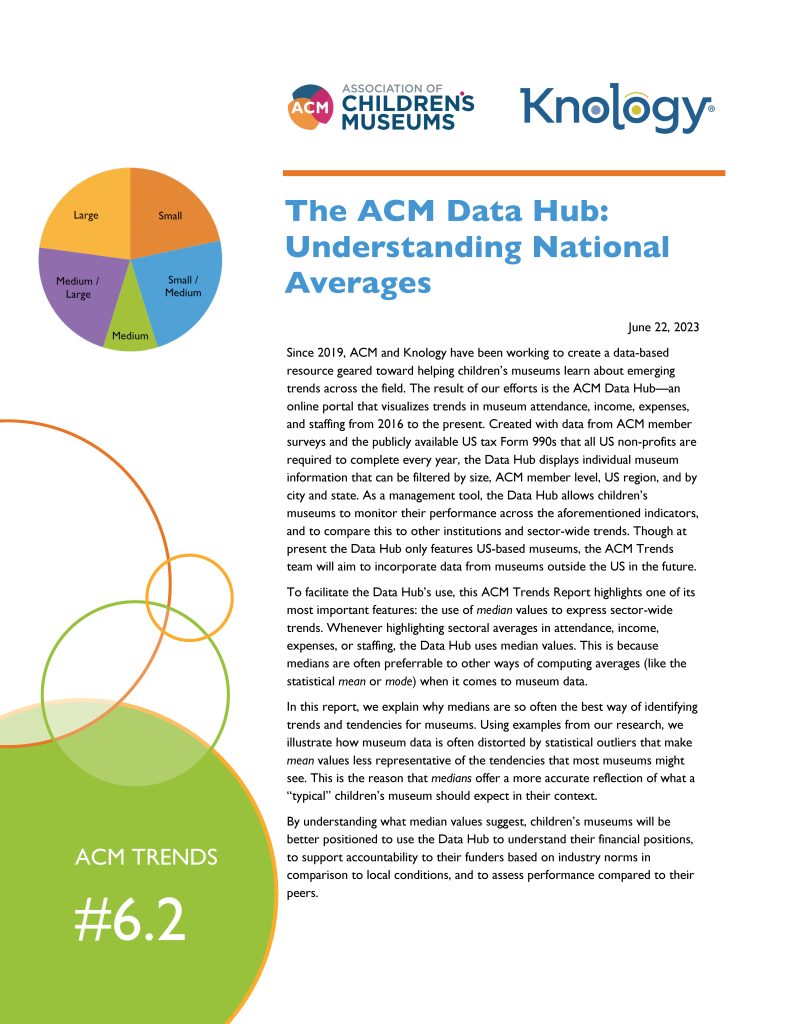June 22, 2023 / News & Blog

Data for this report was drawn from publicly available IRS Form 990s posted on Candid and the ProPublica nonprofit look-up tools. Supplemental data was collected through the Spring 2022 ACM member survey.
Since 2019, ACM and Knology have been working to create a data-based resource geared toward helping children’s museums learn about emerging trends across the field. The result of our efforts is the ACM Trends Data Hub—an online portal that visualizes trends in museum attendance, income, expenses, and staffing from 2016 to the present. Created with data from ACM member surveys and the publicly available US tax Form 990s that all US non-profits are required to complete every year, the Data Hub displays individual museum information that can be filtered by size, ACM member level, US region, and by city and state. As a management tool, the Data Hub allows children’s museums to monitor their performance across the aforementioned indicators, and to compare this to other institutions and sector-wide trends. Though at present the Data Hub only features US-based museums, the ACM Trends team will aim to incorporate data from museums outside the US in the future.
To facilitate the Data Hub’s use, this ACM Trends Report highlights one of its most important features: the use of median values to express sector-wide trends. Whenever highlighting sectoral averages in attendance, income, expenses, or staffing, the Data Hub uses median values. This is because medians are often preferrable to other ways of computing averages (like the statistical mean or mode) when it comes to museum data.
In this report, we explain why medians are so often the best way of identifying trends and tendencies for museums. Using examples from our research, we illustrate how museum data is often distorted by statistical outliers that make mean values less representative of the tendencies that most museums might see. This is the reason that medians offer a more accurate reflection of what a “typical” children’s museum should expect in their context.
By understanding what median values suggest, children’s museums will be better positioned to use the Data Hub to understand their financial positions, to support accountability to their funders based on industry norms in comparison to local conditions, and to assess performance compared to their peers.